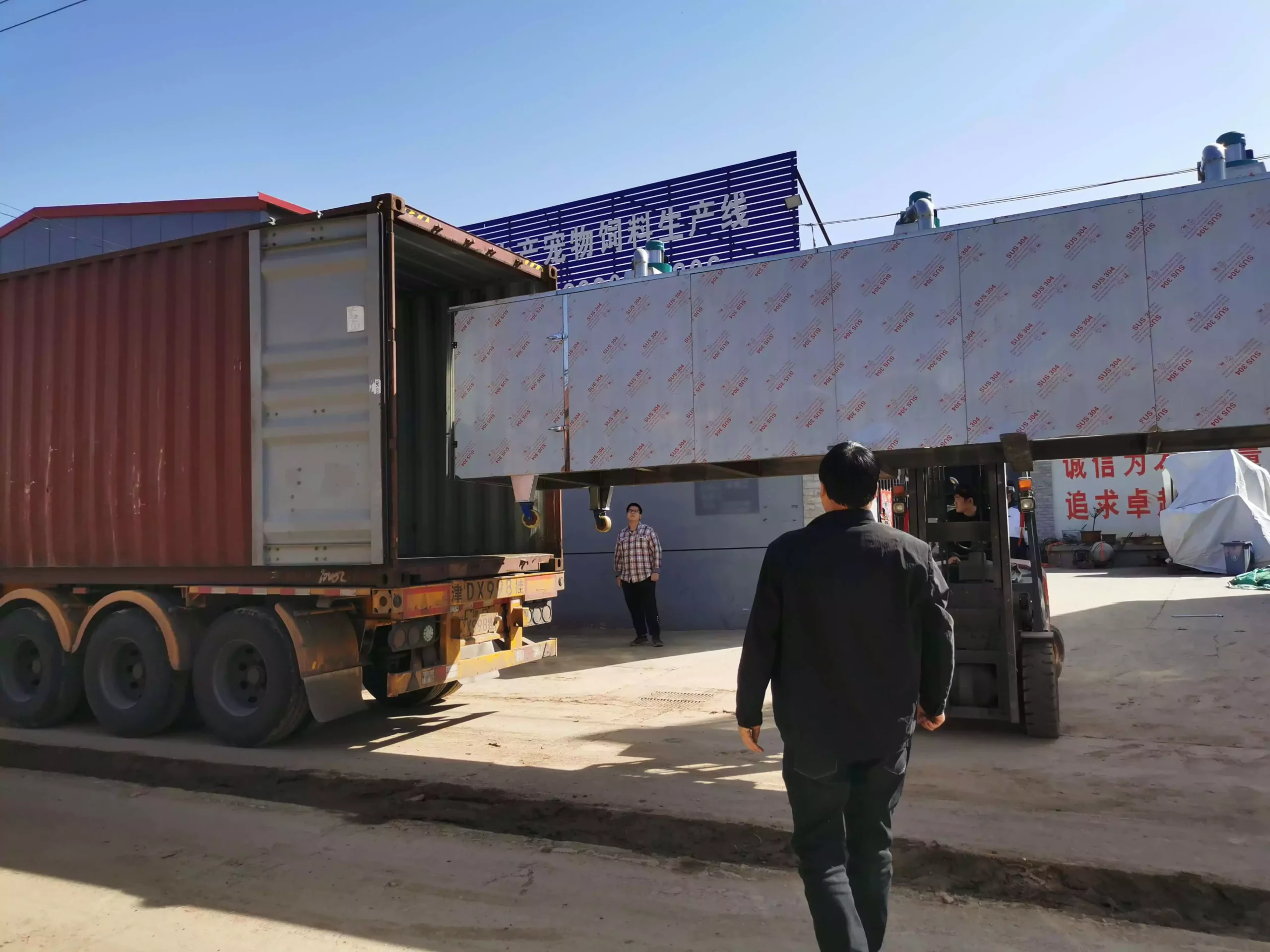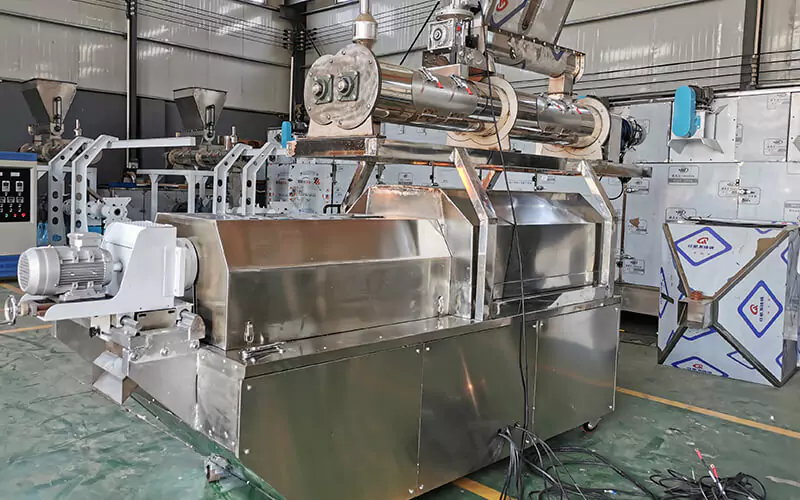Introduction
You see the booming US pet food market and have a great product idea. But the biggest question holding you back is always: “How much does it really cost to start a pet food manufacturing plant in USA?” The answer is complex, but it’s not out of reach.
The Bottom Line Up Front: Ballpark Investment Ranges
Before getting into the details, it’s important to understand the general investment ranges of pet food manufacturing plant.
- Small-Scale Pilot or R&D Plant: For example, $5000 to $8000+. This covers a very basic production line for testing formulas and making small batches, often in a leased facility.
- Medium-Scale Independent Brand Plant (e.g., 1-3 tons/hr): For example, $10000 to $30000+. This range typically includes a complete, professional production line, a basic quality control lab, and facility renovation costs.
- Large-Scale Commercial Plant (e.g., 5-10+ tons/hr): For example, $30000 to $100000+. This involves industrial-grade equipment, high levels of automation, potentially multiple production lines, and extensive infrastructure.
Important Disclaimer: “These are broad estimates. The final cost will depend entirely on the specific factors we discuss below. Always get detailed quotes from suppliers.”
Breaking Down the “Hard Costs”: Machinery & Facility
These are the physical assets you can touch, which make up the body of your pet food manufacturing plant in USA.
- 1. The Production Machinery Itself This is the core of your investment. A complete dry kibble production line includes:
an extruder (the most expensive single piece of equipment),a dryer,a coater,a grinder,a mixer, andan automated packaging system. - 2. The Building and Site Preparation This includes the cost of buying or building a food-grade facility, or the cost of renovating an existing warehouse to meet strict food safety standards (e.g., proper drainage, washable surfaces).
- 3. Utilities and Infrastructure These are significant costs. They include installing a heavy-duty three-phase electrical system, a powerful steam boiler to power the extruder, and potentially water treatment systems.
- 4. The Quality Control (QC) Lab “A professional pet food production plant needs a lab to test raw materials and finished products. This includes equipment to test for moisture, protein, fat, and potential contaminants.”

Breaking Down the “Soft Costs”: Planning, Compliance & Branding
1. Formulation and Product Development The cost of hiring a qualified animal nutritionist to develop a safe, balanced, and AAFCO-compliant pet food formulation.
2. Regulatory Compliance & Legal Fees The cost of legal advice, FDA and state-level registrations, and ensuring your facility and processes are FSMA (Food Safety Modernization Act) compliant.
3. Branding, Packaging Design, and Marketing The cost of creating a brand, designing professional packaging, and the initial marketing budget needed to launch your product.
Inside the Plant: Core Machinery for Pet Food Manufacturing
The machines inside a pet food manufacturing plant depend on the food being made.
For Dry Kibble Production (The Most Common Setup):
- Raw Material Handling & Grinding: This includes machines for storing food parts. It also includes hammer mills. Hammer mills grind the food parts into a fine powder.
- Precision Mixing & Conditioning: Mixers blend the food parts perfectly. Conditioners often add steam to start cooking the mix.
- The Extruder: This is the main pet food extruder machine for making kibble. It works like a giant screw. It cooks, mixes, and pushes a dough out through a shaper. The shaper cuts the dough into kibble pieces.
- Drying & Cooling: A large dryer takes out water. This makes the kibble last a long time. A cooler then brings it to room temperature.
- Coating: A coater sprays the kibble with fats and flavors. These are often added after cooking.
- Packaging: Machines weigh the kibble and fill it into bags.
For Wet Food Production (Briefly, a Different Process):
A wet food plant uses different machines. These include large meat grinders. They use mixers to make a wet slurry. They use fillers and canners to put the food in cans or pouches. And they use machines called Retorts. Retorts are like big pressure cookers. They sterilize the sealed food to make it safe to store.
Planning Your US-Based Pet Food Manufacturing Plant: A Startup Checklist.
- Make a Strong Business Plan & Get Funding.
- Know Your Niche in the Crowded US Market. (e.g., Will you make high-protein dog food? Organic cat food? Special treats?).
- Design a Plant Layout that Follows FSMA Rules.
- Find a Good Supply Chain for Quality Ingredients in the US.
- Pick a Machine Supplier with Pet Food Experience.
- Create a Strong Food Safety Plan (like HACCP) and Quality Checks.
- Plan for Your Workers, Their Training, and Following Rules.

Conclusion
So, how much does it cost to start a pet food manufacturing plant in the USA? It’s a multi-million dollar investment. The cost is not just in the machinery, but also in the facility, regulatory compliance, and planning required to do it right.
While the investment is substantial, for a well-planned business entering a booming market, the potential for profitability is also very real. However, for most startups, the co-packer route is the more prudent financial first step.
Frequently Asked Questions (FAQ)
Q: What is the most expensive single piece of machinery in a dry pet food (kibble) production line?
A: The pet food pellet machine. A high-quality, reliable extruder is the heart of the kibble-making process, and it is almost always the largest single equipment investment.
Q: Why is building a pet food plant so much more expensive than a regular animal feed plant?
A: Because pet food is subject to much stricter food safety regulations (like FSMA). The facility must be built to food-grade standards to prevent contamination, which is a much higher and more expensive standard than for a typical livestock feed mill.
Q: What is the difference in cost between a wet food plant and a dry food (kibble) plant?
A: The costs are both very high, but the focus is different. A dry food plant’s main costs are the extruder and dryer. A wet food plant’s main costs are often in the specialized canning/pouching equipment and the retorts (industrial sterilizers), which are also very expensive. At a similar scale, the total investment is often comparable.
Q: Are there loans available for starting a pet food plant in the USA?
A: Yes. You can seek financing through traditional business loans, venture capital, or, if your business plan is solid, potentially through SBA (Small Business Administration) loan programs.
Q: What is a “co-packer,” and is it a good option for a new pet food brand?
A: A co-packer is an existing pet food factory that you hire to produce your product for you. You do not need to buy any machinery. The costs vary, but you will pay them a fee per bag or per kilogram, and you will usually need to meet a very high minimum production quantity. This can still require a significant investment in raw materials and packaging (for example, $50,000 to $100,000+ for a first production run).
